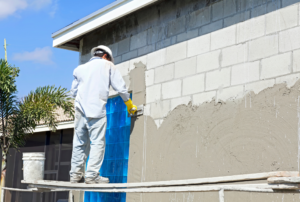Electricians are in high demand, as homeowners electrify their houses to power appliances like heat pumps, stoves, clothes dryers, and EV chargers. Their work also reduces emissions and can help mitigate climate change.
Training for electricians takes less than a year at trade schools such as InterCoast College. It’s also a lot more affordable than a four-year college degree. Contact Nash Electric LLC now!

Electricians perform a variety of tasks, including installing electrical wiring and fixtures and repairing equipment. They also troubleshoot electrical problems and conduct inspections. They are responsible for adhering to local and national electrical codes and safety standards. They use a variety of tools to test electrical components, such as circuit breakers and fuse boxes. They also know how to use wire strippers and cutters, wire pliers, and electrical tape.
This career is highly demanding and requires physical labor, as well as a strong work ethic. It is often stressful, especially on construction sites where there are tight deadlines. However, it can be a rewarding profession for those who enjoy challenging work and are willing to put in the time to learn.
In addition to completing installation and maintenance duties, electricians must be competent at reading blueprints and technical drawings. They must also have excellent communication skills to collaborate with architects, engineers, and contractors. They may also need to interact with end-users or clients, offering guidance on electrical usage and safety precautions.
Specialized electricians include commercial, marine, and industrial electricians. Commercial electricians often work on systems that are higher than 240 volts, and they need to be skilled in handling different power supplies. These electricians may also need to work with voice-data-video (VDV) or fire alarm systems. Other specialized electricians are line workers, electronic craftsmen, and meter and relay technicians.
An electrician must be able to work in a variety of environments, from indoors to outdoors. They often work in cramped spaces or in high places, and they must be able to climb ladders. They must also wear appropriate personal protective equipment, such as rubber-insulated gloves and sleeves, hard hats, and electrical-safety shoes. In addition, electricians need to be able to read and interpret complex schematic diagrams. They may also need to write detailed work orders and prepare sketches to communicate their instructions. This is especially true for field technicians, who must be able to complete a range of tasks in a fast-paced environment. Field technician responsibilities may also involve working in a variety of weather conditions, so they must be prepared for extreme temperatures and humidity.
Education and training requirements
A career as an Electrician requires specialized knowledge of electrical systems, components, and safety practices. Many states require aspiring electricians to complete an apprenticeship program as part of their licensing process. This involves working on real-world projects while under the guidance of a licensed professional. Apprenticeship programs usually last between four and five years and include classroom instruction on electrical theory and systems. Some even offer a combination of technical training and on-the-job experience, making them a great option for aspiring electricians looking to start their careers.
In addition to formal education and hands-on training, aspiring electricians should also take the opportunity to network with other professionals in their field. This can help them find job opportunities, gain mentorship, and stay up to date on new technologies in the industry. It is also essential to learn how to identify electrical problems and perform troubleshooting techniques.
Electricians are vital to construction and infrastructure development. They install wiring in residential and commercial buildings, as well as repair or upgrade existing ones. They often work in hazardous environments, so they need to wear personal protective equipment like rubber-insulated gloves and boots. They must also adhere to strict safety standards when they are working on power lines or installing electrical devices in dangerous locations.
Aspiring electricians should choose an accredited school that offers a comprehensive program that includes both academic and practical training. A good program will teach you about the fundamentals of electrical systems and the proper tools for the trade. It will also prepare you for a career as an electrical technician or master electrician. In addition, a good school will have a career center that can connect you with employers and provide support as you begin your journey into the profession.
Aside from education and training, aspiring electricians should develop strong attention and communication skills. These skills will help them complete their jobs safely and effectively, while ensuring that clients understand the work being done. They should also be able to adapt to a variety of different working conditions and environments. In some cases, this will mean learning to use new technology such as fiber optic or LAN cables. In other cases, it will be a matter of learning to deal with new regulations or environmental issues.
Work environment
Electrical work requires a unique blend of technical precision, physical demands, and safety protocols. It can be stressful and grueling, especially when deadlines are tight or emergency callouts occur. However, balancing these demands with healthy work-life balance can help electricians remain satisfied with their careers and provide better service to their clients.
As a result, this career is great for people who need hands-on, physical work to feel productive. They may spend their days between sun-up and sundown in people’s homes, working on everything from running new wires to installing ceiling fans or light fixtures. They might also find themselves rappelling down the side of a skyscraper or climbing across high-tension wires, depending on the nature of the job.
Electricians often enjoy a diverse work environment and have the opportunity to interact with a variety of different people. They may work alongside HVAC technicians, electrical engineers, CAD designers, and security systems installers. Additionally, they have the chance to travel to various sites and work alongside electrical project managers and estimators.
Whether they’re working on the wiring for a brand-new home or repairing old equipment at a power plant, electrical technicians can expect to work in a loud environment where conditions are hot and humid. They might also have to wear protective equipment, such as rubber-insulated sleeves and gloves, hard hats, and high-visibility vests. They might need to climb ladders and work in tight spaces, and must ensure that their safety is top priority at all times.
To keep their jobs running smoothly, electricians can use advanced scheduling tools to manage their workloads and reduce downtime. They should also commit to continuous learning to learn new techniques and time-saving methods that can lead to faster job completion, higher customer satisfaction, and greater work-life balance.
To maintain a healthy work-life balance, electricians need to focus on their physical and mental well-being. This includes getting enough rest and exercising regularly to promote good health. They should also spend quality time with their family and friends to maintain strong personal bonds. In addition, they should build a support network that can offer advice and empathy about the unique challenges of their careers.
Salary
The average salary of an electrician can vary greatly depending on a variety of factors, including location and experience. Licensed electricians with more skills and knowledge are generally paid higher salaries than those with only a basic electrical license. Additionally, those who specialize in certain areas may earn more than their peers, as they are more sought after for specialized projects. The hourly rate for licensed electricians can also vary, depending on the complexity of the work. For example, installing a light switch may be a simple job that only takes a few hours to complete, while setting up a smart thermostat could take much longer.
While the average electrician salary varies by state, it is usually higher in metropolitan areas than rural ones. The number of jobs and demand for qualified electricians also influence the salary in a particular region, as does the cost of living. Additionally, union electricians can earn higher wages than those not in a union due to their collective bargaining agreement.
The highest paying electrician jobs are those with a master electrician license or who specialize in low or high voltage systems. These positions are typically found in industrial settings, and are in high demand. These jobs are often paid higher than the national average, and can exceed $100,000 a year in some areas.
If you are interested in becoming a licensed electrician, there are several ways to get started. You can start as an apprentice, working with experienced electricians while undergoing training. Once you have the necessary skills, you can begin taking exams to become a fully licensed electrician. Some employers will even pay for your apprenticeship if they see that you are a good candidate for their company.
The best way to increase your salary is to learn more about the field of electrical work and acquire more specialized skills. This can make you a more valuable asset to your employer, and will also help you build up a portfolio of successful projects. It is also important to continue learning as an electrician, because the industry is always changing.








